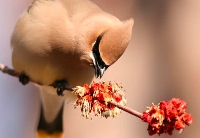
Learn what biodiversity is and why it is an important piece of the sciences
News reports concerning environmental issues often devote some amount of time to the discussion of biodiversity. If you have never taken a college course in biology, botany, or environmental science the term biodiversity might be unfamiliar to you.
To answer the question of what is biodiversity, let’s explore the idea of biodiversity and why it is so important to environmental issues like sustainability and climate change. This subject of biodiversity is vast and will not be able to cover the subject holistically here, but the basics are simple enough to be explained in short order. This is a fairly important concept that is worth taken just a bit of your time to better understand.
The first thing to know about biodiversity is that in many ways it is what it sounds like. It is a portmanteau of the words biology and diversity that refers to the diversity of living organism with a given area; the area in question could be as small as a pond or as large as the entirety of earth itself. It all depends on the scale of biodiversity in question.
~
There are four main categories of biodiversity:
- Taxonomic diversity, or diversity of different species of plants or animals
- Ecological diversity, or diversity within a certain ecosystem
- Morphological diversity, or the genetic diversity within a species
- Functional diversity, or the diversity of functionally different species within a given area
Here functionally different has a broad definition (think predator v. prey or bi-ped v. quadruped).
Ecological Diversity
When we hear biodiversity referred to, people are, in most cases, referring to ecological diversity.
Ecosystems tend to suffer from a lack of biodiversity because a population of animals and plants that are all similar to each other are likely vulnerable to similar threats. If you have an ecosystem where the animal and plant populations can be wiped out with the proliferation of one or two diseases, then it is only a matter of time before the ecosystem becomes desolate and degraded. If that happens then there is a sort of domino effect because many ecosystems are interconnected and interdependent.
The degradation of one ecosystem can lead to a chain reaction which affects everything from climate change to the food supply.
So, now that we have an idea of what biodiversity is and why its important.
There are many non-profit organizations working to sustain biodiversity a number of different ways. Some try to reintroduce members of declining species back into habitats which once held larger populations of them. Others try to increase biodiversity by introducing new species into ecosystems where they might thrive. Many are focused on education, information, and resource-sharing, with programs for both children and adults.
Some of the best work being done is by organizations simply trying to preserve biodiverse ecosystems such Florida Bay and the Everglades. Unfortunately, in North America, our most biodiverse ecosystems were wetlands which have been largely overrun by commercial expansion, leaving less than ten percent of the wetlands which existed before the European colonization of the Americas.
Today, more than ever, biodiversity is essential to the survival of not only animals, but human beings as well.

